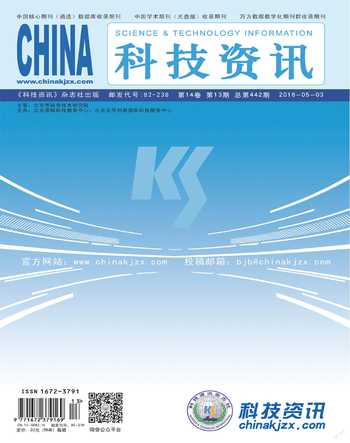深部岩体的卸载破坏及其本构模型
王明洋 范鹏贤 李杰
摘要:随着国民经济的快速发展,交通、采矿、水利、国防等工程逐步进入深地下空间,带来了一些具有挑战性的新的科学问题。本报告研究了深部岩体卸载变形过程和破坏的规律和理论模型,可为深部采矿工程、国防工程提供理论指导。主要内容有: 1. 分析了深部岩体的初始应力状态,认为深部岩体由于其较高的初始地应力的长期作用,其赋存状态已经从典型的固体转变为类似流体的静水压力状态,丧失了进一步抵抗剪切应变的能力。在卸载时,岩体将发生从流变体向典型脆性固体的转化。分析了高初始应力岩体强卸荷的力学行为和破裂波传播特点,推导了产生破裂波的临界初始应力。分析结果表明,只有初始应力大于其临界值时,才会产生破裂波。此临界值与岩体的强度,泊松比和断裂面的耗散能有关。若令断裂面的耗散能趋近于零,则断裂波的发生条件与岩体进入全向压缩状态的条件一致。 2. 提出了岩石轴压劈裂和卸载拉伸破坏主要是由于岩石材料的非均匀性及其内部缺陷导致的应力集中引起的,建立了基于应力集中和应力起伏假设的粘性松弛模型,分析了轴向卸载和单轴压缩劈裂时试样内部的局部应力状态,并指对加卸载速率、缺陷尺寸和初始应力对岩石卸载过程中缺陷处的应力集中的影响进行了分析。利用岩石类材料的不同试验条件和加卸载速率下的加卸载破坏试验和实地观测数据对理论分析结果进行了验证,理论分析结果与试验现象和观测统计数据基本吻合。 3. 根据深部岩体在卸荷条件下能量释放、消耗和转移的过程中,体积变形经历弹性回弹和扩容,剪切变形可能经历峰值前和峰值后阶段的性状,提出了深部岩体全过程变形破坏动态本构模型。该模型具有以下特点:(1)引入Juamann导数,能够计算有限变形;(2)描述了卸荷过程中与时间相关的体变回弹、扩容至破裂的全过程关系;(3)描述了卸荷过程中,深部岩体强度被调动的演化过程,并用同轴的屈服面、破坏面与残余破坏面三个圆锥面加以描述;(4)运用物理细观力学理论,引入宏观裂纹扩展滞后时间表征岩体不同构造水平在强化中的贡献,给出了内摩擦强化阶段流变方程;(5)运用裂纹运动散布理论,引入破裂时间表征宏观裂纹扩展贯通过程,给出了破裂过程中的强度随时间的演化方程,用塑性流动理论给出了软化阶段形变本构方程。该模型物理概念清晰、模型参数少,便于实际工程应用。
关键词:深部岩体;初始状态;卸载破坏;本构模型
Abstract:Deep rock mass is a kind of geological material which can be regarded as a rheologic material, and its inhomogeneity is covered up by its rheologic behavior. Under the disturbance of an unloading, the quasi liquid state of rock, which can be described by volume elastic model under compression, transfers from balancing quasi liquid state to non-equilibrium solid state. Analytical model for rocks under intensive unloading condition is established to study the failure behavior of highly stressed rocks. If the initial stress exceeds the critical stress, there will be a fracture wave, following the elastic unloading wave. Results show that the post-peak deformation, strength and energy dissipation are essential to the failure process of highly stressed rocks. In order to investigate the behavior of rock in depth,the unloading of hydrostatic stressed rock in axial direction is analyzed. Analysis shows that the tension stress is parallel to unloading direction. The main influential factors of tension stress are physical parameters of nonuniformities,initial stress of rock and unloading speed. The influence of unloading duration and initial stress on the stress concentrations of nonuniformities is analyzed in detail. Results show that the shorter the unloading duration is, the greater the stress concentration is. And if the scale of nonuniformities is large enough,the local tension stress will be approximately proportional to the initial stress. Rock will be destructed by tension during rapid unloading in deep rock engineering. Data of laboratory test and in-situ observation are cited to verify the analytical analysis results. In order to describe the unloading failure process of deep rock mass, a new dynamic constitutive model is presented. The characteristics of this model can be summarized as: (1) Juamann derivative is employed to compute large deformation problems; (2) The elastic resilience and volumetric dilatation with time is considered to establish the volume deformation constitutive relationship; (3) Three coaxial conical surfaces (yield surface、peak strength surface and residual strength surface) are used to present the strength evolution; (4) Fracture lag time is employed to establish the rheological equation for hardening stages; (5) Fracture time is employed to establish the equation of strength evolution. Secondary development of the model is operated using ABAQUS platform.
Keywords:deep rock mass; initial state; unloading failure; constitutive model

